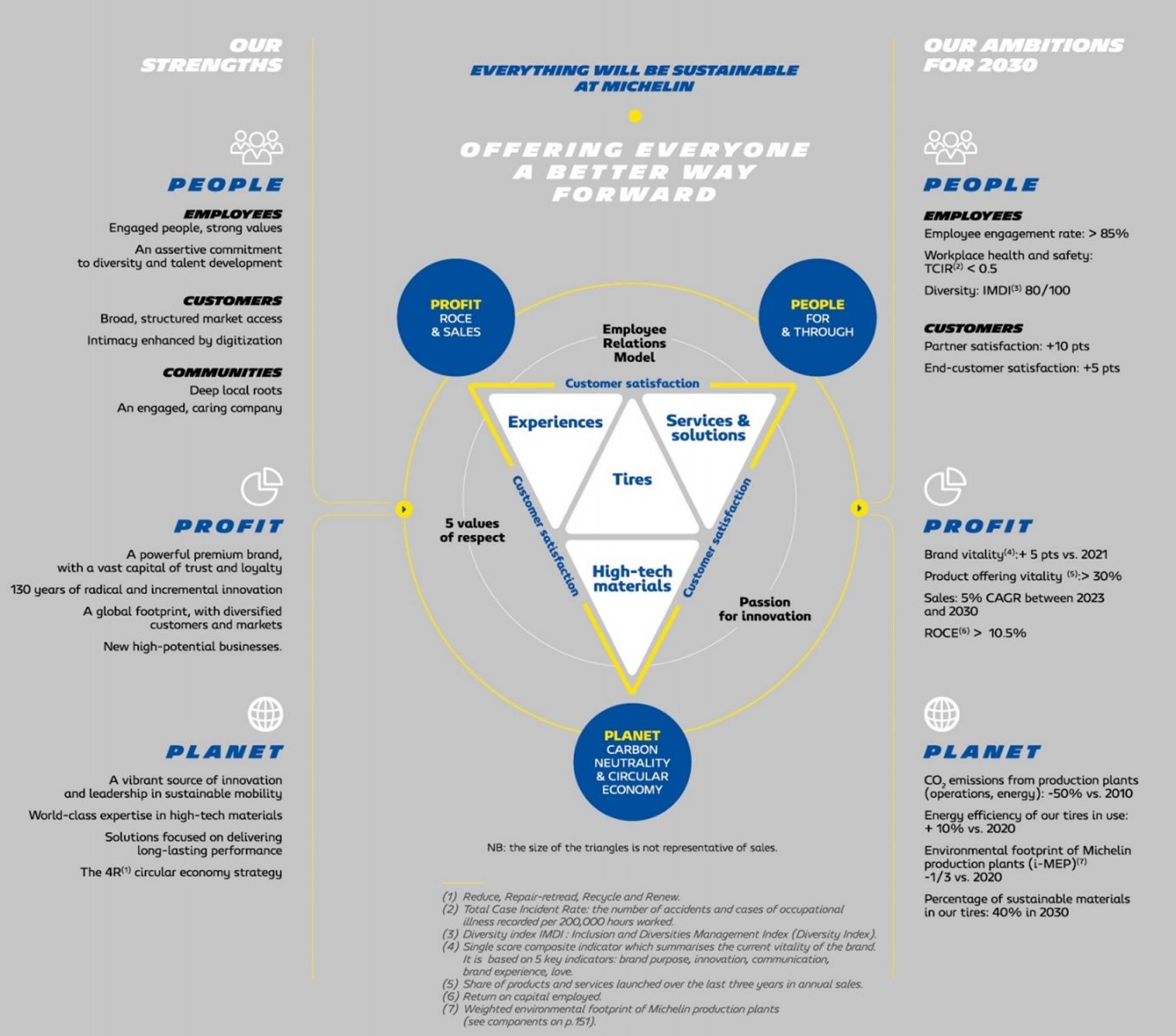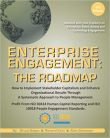Michelin Human Capital Graphic Tells the Story of Stakeholder Capitalism Implementation
Best known for its tires and restaurant and hotel guides, Michelin is also an example of Stakeholder Capitalism in action. As the graphic Michelin uses to tell its human capital story clearly shows, Stakeholder Capitalism is simply better business.
By Bruce Bolger
Consistent with the principles of Stakeholder Capitalism, Michelin publishes a Corporate Sustainability Report with its annual report that also includes human capital reporting. To explain it’s overall approach, it publishes a graphic consistent with the principles of Stakeholder Capitalism, demonstrating that this movement in fact is simply better business and has nothing to do with corporatism or “woke capitalism.”
Here’s how this graphic encompasses the implementation of Stakeholder Capitalism by addressing the interests of all stakeholders.

1. The report begins with the fundamental issue of purpose and mission. “Offering everyone a better way forward” and “Everything will be sustainable.”
2. Goals are articulated: “Profit; People, for and through, and Planet, carbon neutrality and circular economy.” It defines profit more broadly than the profit/loss statement: “A powerful, premium brand with a vast capital of trust and loyalty; 130 years of radical and incremental innovation; a global footprint with diversified customers and markets; new high-potential businesses.”
3. Stakeholders and their inter-connectivity are defined. It shows the customers, employees, and communities—and the products and services that unite them: tires, experiences, services and solutions, high-tech materials. The report highlights the interconnectivity of customers and employees, focusing on employee relations and the companies five values centered on respect, with customer satisfaction at the center.
4. It describes the company’s people strengths.
Employees: strong values; an assertive commitment to diversity and talent development.
Customers: broad, structured market access; intimacy enhanced by digitalization.
Communities: deep local roots; an engaged, caring company.
5. It specifies its metrics for people, profit, and planet.
Employees: employee engagement rate; workplace health and safety; and diversity.
Customers: partner satisfaction; end-customer satisfaction.
Profit: brand vitality (an internal score based on brand purpose, innovation, communication; brand experience, love); sales; product offering vitality (share of annual sales by products launched in the last three years) and a calculation of Return on Capital Employed (ROCE).
Environment: carbon-dioxide emissions, energy efficiency, environmental footprint, and percentage of sustainable products used in its tires.
The next step will be for Michelin to have its claims verified by an independent audit.
Click here to get ESM news delivered each week.
Master the “S” of Environmental, Social, Governance (ESG), A.k.a. Stakeholder Capitalism
The Enterprise Engagement Alliance at TheEEA.org is the world’s first and only organization that focuses on outreach, certification and training, and advisory services to help organizations achieve their goals by fostering the proactive involvement of all stakeholders. This includes customers, employees, distribution and supply chain partners, and communities, or anyone connected to an organization’s success.
Training and Thought Leadership
- Founded in 2008, the Enterprise Engagement Alliance provides outreach, learning and certification in Enterprise Engagement, an implementation process for the “S” or Social of Stakeholder Capitalism and Human Capital Management and measurement of engagement across the organization.
- The Enterprise Engagement Alliance provides a training and certification program for business leaders, practitioners, and solution providers, as well as executive briefings and human capital gap analyses for senior leaders.
- The EEA produces an education program for CFOs for the CFO.University training program on Human Capital Management.
- Join the EEA to become a leader in the implementation of the “S” of ESG and Stakeholder Capitalism.
- The ESM information portal and The Enterprise Engagement Advisors Network solution provider marketplace cover all aspects of stakeholder engagement, and the EEA information library lists dozens of resources.
- The RRN information portal and Brand Media Coalition marketplace address the use of brands for gifting, incentives, recognition, and promotions. The BMC information library provides information and research resources.
Video Learning
The EEA Human Capital Management and ROI of Engagement YouTube channel features a growing library of 30- to 60-minute panel discussions with leading experts in all areas of engagement and total rewards.
- Enterprise Engagement for CEOs: The Little Blue Book for People-Centric Capitalists. A quick guide for CEOs.
- Enterprise Engagement: The Roadmap 5th Edition implementation guide. A comprehensive textbook for practitioners, academics, and students.
Enterprise Engagement Advisory Services
The Engagement Agency helps:
- Organizations of all types develop strategic Stakeholder Capitalism and Enterprise Engagement processes and human capital management and reporting strategies; conduct human capital gap analyses; design and implement strategic human capital management and reporting plans that address DEI (Diversity, Equity, and Inclusion), and assist with managed outsourcing of engagement products and services.
- Human resources, sales and marketing solution providers profit from the emerging discipline of human capital management and ROI of engagement through training and marketing services.
- Investors make sense of human capital reporting by public companies.
- Buyers and sellers of companies in the engagement space or business owners or buyers who seek to account for human capital in their mergers and acquistions.
For more information: Contact Bruce Bolger at Bolger@TheICEE.org or call 914-591-7600, ext. 230.















